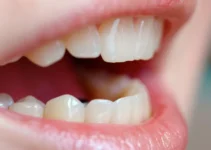Maintaining the health inside your mouth is crucial for overall well-being. A healthy oral cavity not only prevents dental diseases but also protects against wider health issues that can be linked to poor oral hygiene, such as heart disease and diabetes. Regular brushing, flossing, and dental check-ups are essential routines. Furthermore, understanding the salience of a balanced diet and avoiding tobacco products can significantly contribute to preserving your oral health. This article explores various practices and medical insights to help you keep your mouth in optimal condition.
Understanding the Oral Microbiome
The oral microbiome is a complex and dynamic environment, consisting of a myriad of microorganisms including bacteria, fungi, viruses, and archaea. These microorganisms live in various habitats within the oral cavity, such as the tongue, teeth, gums, and saliva. The balance between these microorganisms plays a crucial role in maintaining oral health and preventing diseases.
Modern research has highlighted the importance of the oral microbiome in systemic health, linking it to conditions such as cardiovascular diseases, diabetes, and respiratory infections. Understanding the interactions within this microbiome is essential for developing effective preventive and therapeutic strategies.
Role of Bacteria in Oral Health
Bacteria are the most abundant microorganisms in the oral cavity. They are involved in various processes that either promote health or contribute to disease. Beneficial bacteria, such as those belonging to the genera Streptococcus and Lactobacillus, help in the digestion of food and the prevention of colonization by pathogenic species. These bacteria produce acids that can inhibit the growth of harmful microorganisms.
However, pathogenic bacteria, including species like Streptococcus mutans and Porphyromonas gingivalis, are capable of causing dental caries and periodontal diseases. They produce biofilms, known as dental plaque, which can lead to the destruction of tooth enamel and gum tissue. The balance between beneficial and harmful bacteria is crucial for maintaining oral health.
Balancing Good and Bad Microbes
Maintaining a healthy balance between beneficial and harmful microbes is key to oral health. Various factors, such as diet, genetics, and lifestyle, influence this balance. A diet rich in sugars and carbohydrates can promote the growth of pathogenic bacteria, whereas a diet high in fiber and low in sugar supports beneficial bacterial populations.
Probiotics and prebiotics have been shown to play a role in restoring microbial balance. Probiotics are live beneficial bacteria that can be ingested through supplements or certain foods. Prebiotics are non-digestible food components that promote the growth of beneficial bacteria. Incorporating these into one’s diet may help to inhibit the growth of pathogenic bacteria and support oral health.
Additionally, regular dental check-ups and cleanings are important in maintaining microbial balance. Dental professionals can remove plaque and tartar that harbor harmful bacteria, preventing the onset of diseases.
Impact of Oral Hygiene Practices
Good oral hygiene practices are paramount in maintaining a healthy oral microbiome. Brushing twice a day with fluoride toothpaste, flossing daily, and using an antimicrobial mouthwash can significantly reduce the load of harmful bacteria in the oral cavity.
- Brushing helps remove food particles and plaque from the surfaces of the teeth.
- Flossing removes debris and plaque from between the teeth and below the gum line, areas that toothbrushes cannot reach.
- Mouthwash can reach areas that brushing and flossing miss, providing an additional layer of protection.
Inadequate oral hygiene can lead to the accumulation of plaque and the formation of tartar, creating an environment where pathogenic bacteria thrive. Over time, this can lead to gingivitis, periodontitis, and dental caries.
As you continue to explore the intricate world of the oral microbiome, consider reading more about recent advancements in regenerative dentistry and implantology. These fields offer promising insights and techniques for enhancing oral health and overall well-being.
Daily Habits for Maintaining Oral Health
Maintaining good oral health is crucial for overall well-being. It’s not just about having a bright smile; a healthy mouth can prevent numerous medical conditions. By incorporating some simple daily habits, you can ensure your teeth and gums stay healthy. This article will delve into effective brushing techniques, the importance of flossing, and choosing the right mouthwash.
Oral health is a gateway to overall health. According to the American Dental Association (ADA), poor oral hygiene can lead to various problems including gum disease, infections, and even heart disease. By following best practices for oral care, you can minimize these risks and maintain a healthy, confident smile. Incorporating these habits into your daily routine doesn’t take much time but can have long-lasting benefits. Let’s explore some of the most important aspects of daily oral care.
Effective Brushing Techniques
Brushing your teeth seems like a straightforward task, but there’s more to it than just moving a brush around your mouth. Using the right technique is essential for removing plaque and preventing cavities. The ADA recommends brushing for at least two minutes, twice a day. Use a toothbrush with soft bristles and fluoride toothpaste for the best results.
Holding your toothbrush at a 45-degree angle to your gums can make a significant difference. Gently move the brush back and forth in short (tooth-wide) strokes. Make sure to brush all surfaces of your teeth, including the outer, inner, and chewing surfaces. Don’t forget to brush your tongue to remove bacteria and keep your breath fresh.
If you’re not sure whether you’re brushing correctly, consult your dentist for a demonstration. Using an electric toothbrush can also help, as many models come with built-in timers and pressure sensors to ensure you’re brushing effectively.
The Importance of Flossing
While brushing is crucial, it’s not enough on its own. Flossing plays a key role in removing debris and plaque from between the teeth and below the gumline, areas that a toothbrush can’t reach. Studies have shown that flossing regularly can reduce the risk of gum disease and tooth decay.
The ADA suggests flossing at least once a day. Use about 18 inches of floss, winding most of it around your middle fingers and leaving an inch or two to work with. Gently guide the floss between your teeth using a rubbing motion. Curve it into a C shape against one tooth and slide it up and down, making sure to go below the gumline. Repeat for each tooth, using a clean section of floss every time.
If traditional floss is difficult for you to use, consider using floss picks or water flossers as alternatives. These tools can also be effective in maintaining oral health, particularly for those with braces or other dental appliances.
Choosing the Right Mouthwash
Mouthwash can be a valuable addition to your oral care routine, but it’s essential to choose the right one. Not all mouthwashes are created equal; some are designed to freshen breath, while others aim to kill bacteria, reduce plaque, or strengthen enamel. The ADA provides a Seal of Acceptance for products that have been scientifically proven to be safe and effective.
Look for a mouthwash that meets your specific needs. For instance, if you’re prone to cavities, a fluoride mouthwash may be beneficial. For those dealing with gum issues, an antibacterial mouthwash can help. Always follow the instructions on the label, and remember that mouthwash should never be a substitute for brushing and flossing.
It’s worth noting that not everyone needs to use mouthwash. According to some studies, the benefits of mouthwash are often complementary to a good brushing and flossing routine. If you’re uncertain about incorporating mouthwash into your daily regimen, consult your dentist for personalized advice.
By adopting these daily habits, you can significantly improve your oral health and enjoy a brighter, healthier smile. Always stay informed and consult your dentist for any questions or concerns you may have. Be sure to read our other articles for more tips and information on maintaining excellent oral health.
Common Oral Health Issues and How to Prevent Them
Maintaining optimal oral health is essential for overall well-being. Unfortunately, many people face various oral health issues that can impact their quality of life. This article will explore some of the most common oral health problems and provide practical tips for prevention. By understanding these issues and adopting good oral hygiene practices, you can significantly reduce the risk of developing serious dental problems.
Good oral health is more than just having a bright smile; it’s about maintaining healthy teeth and gums to prevent diseases that could affect other parts of your body. Studies have shown that poor oral health can lead to conditions like heart disease and diabetes. Therefore, it’s crucial to be aware of common oral health issues and know how to prevent them effectively.
Cavities and Tooth Decay
Cavities, also known as dental caries, are one of the most prevalent oral health issues globally. They occur when the bacteria in your mouth produce acids that erode the tooth enamel. Over time, this can lead to tooth decay, causing pain, infection, and even tooth loss. According to the World Health Organization (WHO), nearly 60-90% of school children and almost all adults have dental cavities at some point in their lives.
Preventing cavities requires a combination of good oral hygiene practices and dietary changes. Here are some effective strategies to prevent cavities:
- Brush your teeth at least twice a day with fluoride toothpaste.
- Floss daily to remove food particles and plaque from between your teeth.
- Reduce the intake of sugary and acidic foods and beverages.
- Visit your dentist regularly for check-ups and cleanings.
Additionally, dental sealants and fluoride treatments can offer extra protection for your teeth, especially for children and teens. Sealants are a barrier applied to the chewing surfaces of the back teeth to prevent decay, while fluoride treatments help to remineralize and strengthen enamel.
Gum Disease and Its Stages
Gum disease, also known as periodontal disease, is an infection of the gums that can progress to affect the bone that supports your teeth. It typically starts as gingivitis, characterized by red, swollen, and bleeding gums. If left untreated, gingivitis can advance to periodontitis, causing gums to pull away from the teeth, bone loss, and eventually tooth loss. According to the Centers for Disease Control and Prevention (CDC), nearly half of adults aged 30 and older show signs of gum disease.
Preventing gum disease involves maintaining excellent oral hygiene and being aware of its early signs. Key practices include:
- Brush your teeth twice a day.
- Floss daily to remove plaque between teeth and under the gumline.
- Use an antiseptic mouthwash to reduce bacteria that cause gum disease.
- Avoid tobacco products, as smoking is a significant risk factor for gum disease.
Regular dental check-ups are crucial, as they allow for early detection and treatment of gum disease. If you notice any signs of gum disease, such as persistent bad breath, loose teeth, or changes in your bite, consult your dentist immediately.
Bad Breath: Causes and Solutions
Bad breath, or halitosis, is a common concern that can be both socially embarrassing and indicative of underlying health issues. The most frequent cause of bad breath is poor oral hygiene, which leads to the accumulation of food particles and bacteria in the mouth. Other causes include dry mouth, certain foods and beverages, smoking, and systemic conditions like respiratory infections or gastrointestinal issues.
To combat bad breath, it is essential to adopt a comprehensive oral hygiene routine:
- Brush your teeth and tongue at least twice a day.
- Floss daily to remove trapped food particles and plaque.
- Stay hydrated to prevent dry mouth.
- Avoid foods and drinks that can cause bad breath, such as garlic, onions, and coffee.
- Quit smoking and limit alcohol consumption.
Sometimes, bad breath persists despite good oral hygiene. In such cases, it is important to visit a dentist or a healthcare provider to identify and treat any underlying conditions. Regular dental check-ups can help diagnose the cause of bad breath and provide appropriate treatments, such as professional cleanings or special mouthwashes.
Understanding these common oral health issues and their prevention methods is the first step toward maintaining a healthy mouth and a beautiful smile. For more in-depth information and advanced dental care topics, feel free to explore other articles on our site.
The Role of Diet in Oral Wellness
The connection between nutrition and overall health is universally acknowledged, but its impact on oral wellness often gets overlooked. A balanced diet is essential not just for maintaining a healthy body, but also for promoting strong teeth and gums. Nutritional deficiencies can lead to oral health problems like gum disease and tooth decay.
Oral health is closely tied to the consumption of specific nutrients. Vitamins and minerals such as calcium, phosphorus, and vitamin D play a critical role in dental health by aiding in the formation of tooth enamel and maintaining gum health. Consuming a nutrient-rich diet can help in preventing various dental issues and contribute to overall well-being.
Moreover, diet affects oral health not only through the type of foods consumed but also by influencing the pH levels in the mouth. Foods that maintain a neutral or slightly alkaline pH help prevent the growth of harmful bacteria, thus keeping the mouth healthy.
Foods That Promote Oral Health
Including certain foods in your diet can significantly contribute to improved oral health. Dairy products like milk, cheese, and yogurt are rich in calcium and phosphorus, which help strengthen tooth enamel.
Leafy greens such as spinach and kale are also beneficial as they are loaded with vitamins and minerals, including calcium. Additionally, these greens stimulate saliva production, which aids in cleaning the mouth and neutralizing acids. Fatty fish, rich in vitamin D, facilitate the absorption of calcium and phosphorus, further contributing to oral health.
Nuts and seeds are another excellent choice. They provide essential nutrients and healthy fats that support gum health. For instance, almonds are high in calcium and protein but low in sugar, making them an ideal snack for maintaining strong teeth.
Lastly, fibrous fruits and vegetables like apples, carrots, and celery scrub away plaque and bacteria while stimulating the gums, thus serving as a natural toothbrush. Incorporating these items into your diet can help maintain a healthy mouth.
Harmful Dietary Choices
Conversely, some dietary choices can be detrimental to oral health. High-sugar foods and beverages can lead to tooth decay and cavities. When bacteria in the mouth come into contact with sugar, they produce acid that attacks the enamel, leading to decay.
Carbonated drinks such as soda are particularly harmful. They not only contain high levels of sugar but are also acidic, which can erode the enamel. This double impact makes sodas a significant risk factor for dental problems.
Sticky foods, such as certain candies and dried fruits, can also increase the risk of tooth decay. These foods tend to cling to teeth, providing a prolonged source of sugar for bacteria. The longer these sugars remain in contact with the teeth, the higher the chance of developing cavities.
Additionally, frequent snacking can be harmful. Constant eating throughout the day doesn’t give saliva a chance to neutralize the acids produced by these foods, increasing the risk of tooth decay. Limiting snacks and making healthier choices for meals can mitigate this risk. Understanding the impact of diet on oral health is crucial for maintaining a healthy mouth. For more insights into oral wellness, explore our other articles on topics like advanced dental implantology and effective oral hygiene practices.
Common Questions About Inside Mouth Care
Maintaining the health of the inside of your mouth is crucial for overall well-being. Here are some frequently asked questions to help you understand how to keep your mouth healthy.
What is the best way to maintain healthy gums and teeth?
Regular brushing twice a day with fluoride toothpaste, flossing daily, and visiting your dentist at least twice a year for professional cleanings and check-ups are essential steps. Also, eating a balanced diet and limiting sugary snacks and drinks can help prevent common dental problems like cavities and gum disease.

My name is Salman Kapa, a 73-year-old expert in bone regeneration and dental implantology. With decades of experience in the field, I am dedicated to advancing our understanding of oral health and hygiene. Through my research and writing, I aim to contribute to the development of innovative solutions in dental care.




